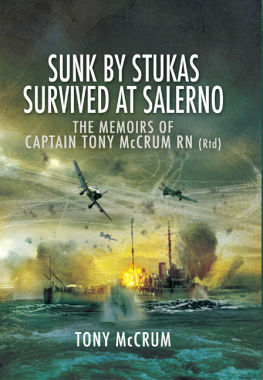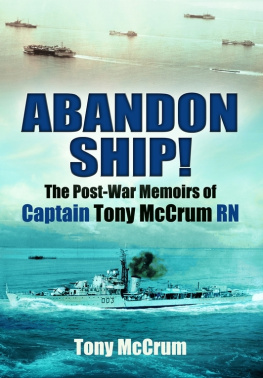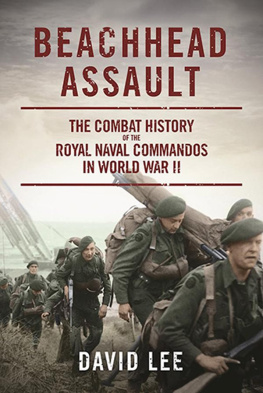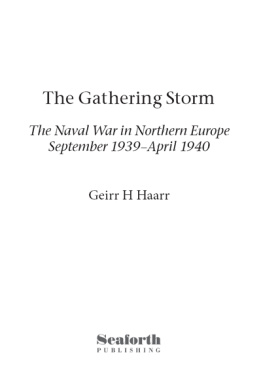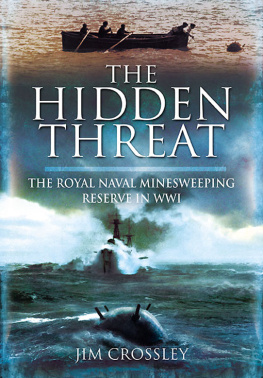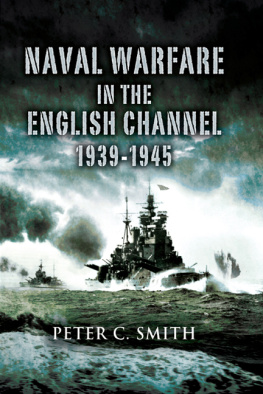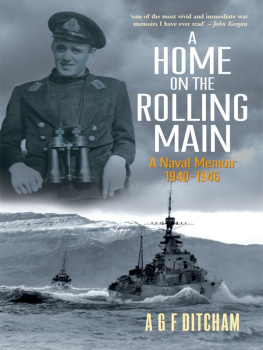Then lend the eye a terrible aspect.
Chapter One
Conditioning
The Royal Naval College, Dartmouth 19321936
F or me, World War II started on Armistice Day, 11 November 1918. I was born in March 1919 while my mother was recovering from the Spanish flu pandemic, which killed 40 million worldwide and nearly killed her and me. I grew up under the horrors of the Great War, as it was called. As a schoolboy I studied the history of that ghastly struggle. I read how on the first day of the Battle of the Somme in France (1916) there were 60,000 British casualties and how in the even more terrible Passchendaele campaign (August to September 1917) there were 300,000 dead and wounded, many of them drowned in the mud of Flanders fields.
At the Royal Naval College at Dartmouth I read widely amongst the war poets and the anti-warleft wing authors of those post-war years and they exerted a powerful influence on my juvenile mind. It made me wonder why I was in one of the fighting services, but one didnt question parental decisions in those days and I was probably open minded enough to appreciate there as another side to the fashionable political arguments of left wing socialism.
Here are three of the war poems that affected me strongly and are typical of so many that nearly turned me into a pacifist.
Anthem for Doomed Youth
By Wilfred Owen
What passing bells for those who die as cattle?
Only the monstrous anger of the guns.
Only the stuttering rifles rapid rattle
Can patter out their hasty orisons.
No mockeries for them, no prayers nor bells,
Nor any voice of mourning save the choirs,
The shrill demented choirs of wailing shells
And bugles calling from the shires.
The General
By Siegfried Sassoon
Good morning, good morning! the General said
when we met him last week on our way to the line.
Now the soldiers he smiled at are most of them dead,
And were cursing his staff for incompetent swine.
Hes a cheery old card grunted Harry to Jack
As they slogged up to Arras with rifle and pack.
But he did for them by his plan of attack.
The Aftermath
By Siegfried Sassoon
Do you remember the rats; and the stench
Of corpses rotting in front of the front-line trench
And dawn coming dirty white and chill with a hopeless rain?
Do you ever stop and ask, is it ever going to happen again?
Sassoon wrote the last poem just after the end of the war in early 1919, the year I was born, and of course it did happen again twenty years later. The right timing for a baby born in March 1919.
Throughout the land there was the feeling that such slaughter must never happen again. It is difficult now (2009) to understand the universal anti-war mood in the country and the revulsion at the appalling slaughter on the Western Front. In Europe there were four million war widows and many more single women whose loved ones had been killed. Germany and France suffered terrible losses amongst their manhood. Britain suffered less because our country never became a battlefield, but we lost three quarters of a million servicemen with a further two and a half million wounded, some terribly maimed. Do we remember that Australia lost 60,000 killed and Canada 57,000, all volunteers to fight for the Empire? One and a half million Indians also fought for the British Empire. It was another world.
For my generation, growing up in the 1930s and beginning to question and think for ourselves, it was absolutely inconceivable that we should fight another war. Indeed, the concept of war to solve international disputes seemed evil. There had to be other ways of settling disputes, or so we thought.
In 1920 the bodies of four unidentifiable soldiers were dug up from the muddy landscape of Flanders and after a careful check that there was no possible means of identification one body was selected to be The Unknown Warrior to be buried in Westminster Abbey in the presence of the King and Queen on 11 November 1920, exactly two years after the bugles sounded the Ceasefire in France.
The unknown body was brought by train from France and rested overnight at Victoria Station and then taken on a gun carriage to Westminster Abbey for burial inside the Great West Door, where it lies to this day.
The tomb of The Unknown Warrior, now usually called The Unknown Soldier, was revered throughout Britain and the overwhelming emotion in the country was Surely Never Again.
In 1920 a simple stone cenotaph, an empty tomb, was unveiled by the King in London in Whitehall to commemorate all the dead of the British Empire. In the immediate aftermath of the war the annual Armistice Day ceremony at the cenotaph at 11 am on 11 November, the time and date the war ended, was a hugely emotional experience. Across the land silence fell for two minutes while the dead were remembered. Trains, buses, factories and mines all fell silent in memory of the dead.
Such anti-war emotions created a mood of sincere pacifism and a yearning to make changes in society. To illustrate the strength of this feeling the undergraduates of Oxford University debating society, the Oxford Union, passed a resolution in 1933 that this House will in no circumstances fight for King and Country. A few years later some of them could be found amongst The Few who saved their country flying Spitfires and Hurricanes in the Battle of Britain.
A League of Nations was set up, a forerunner of the United Nations, by countries hoping to preserve the peace for future generations. The League would arbitrate in disputes between nations and if necessary stop them by force. It was part of this emotional wave of a desire to avoid any more wars and I was hooked by the concept of everlasting peace. Unfortunately the Americans refused to join and the League became a toothless monster.

